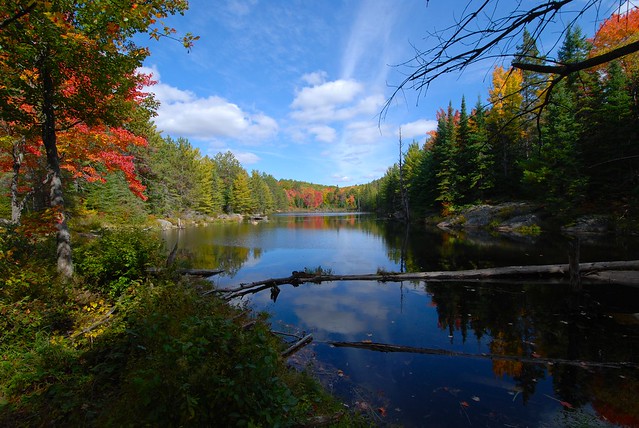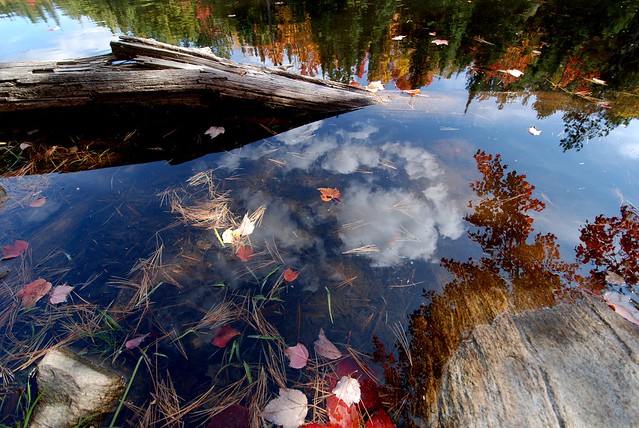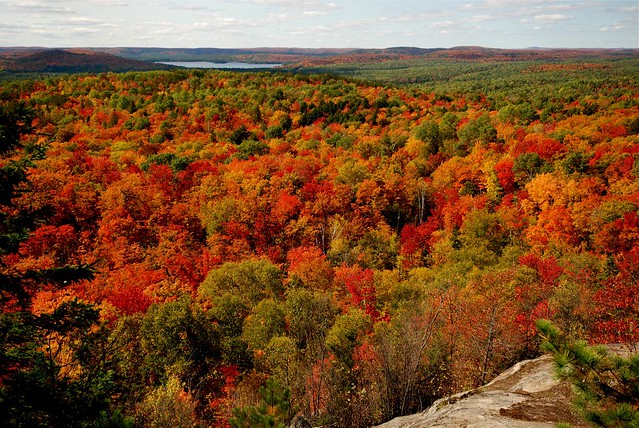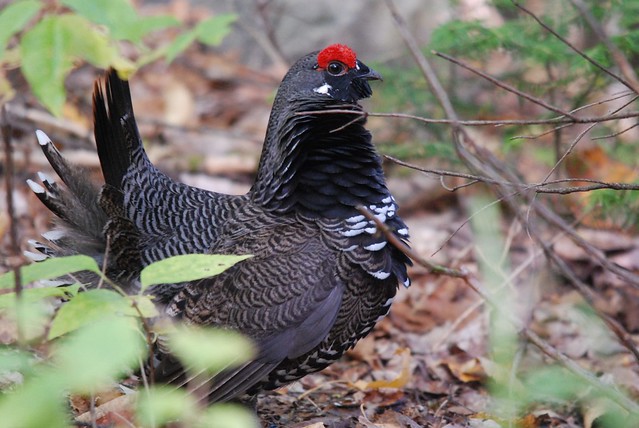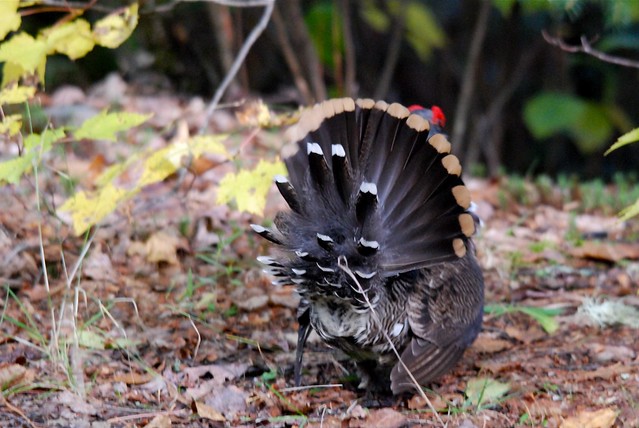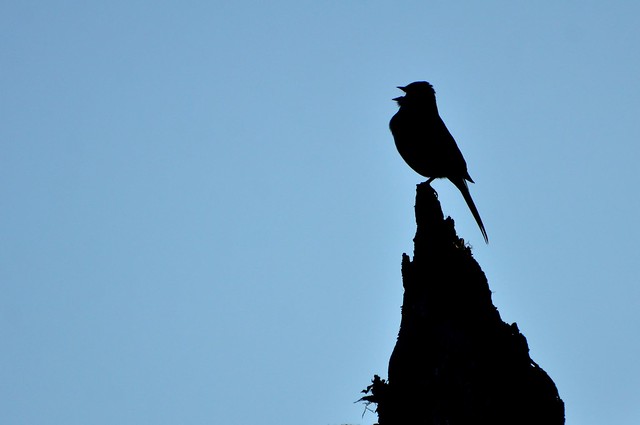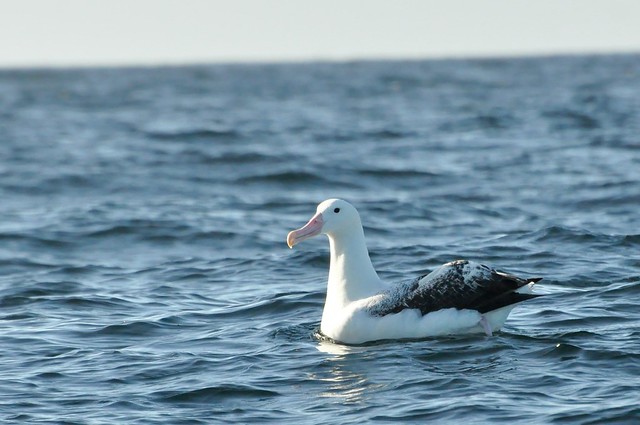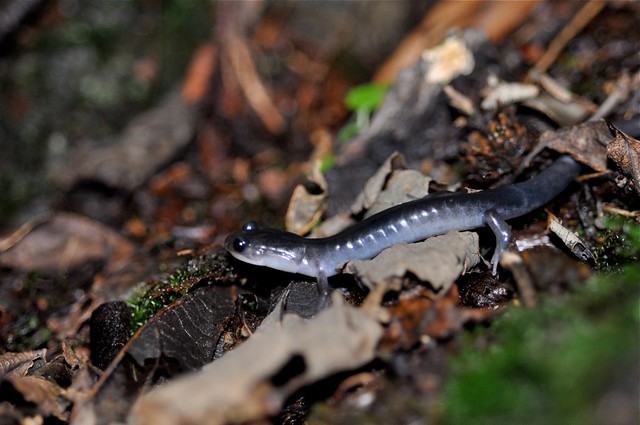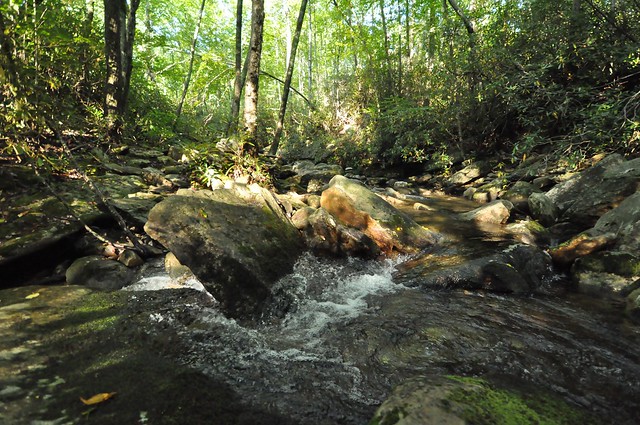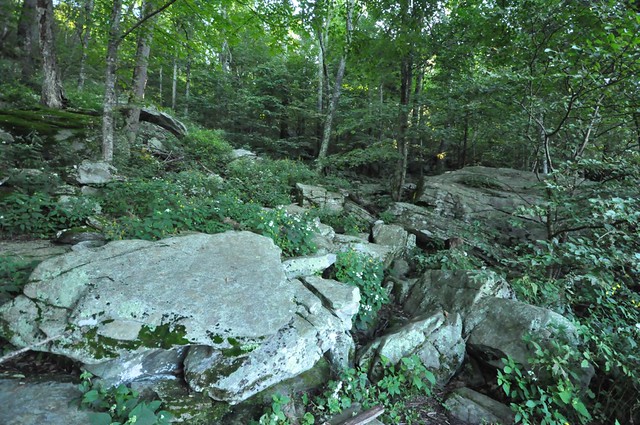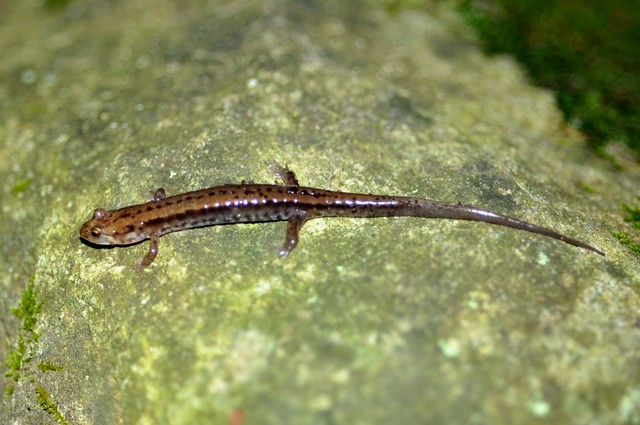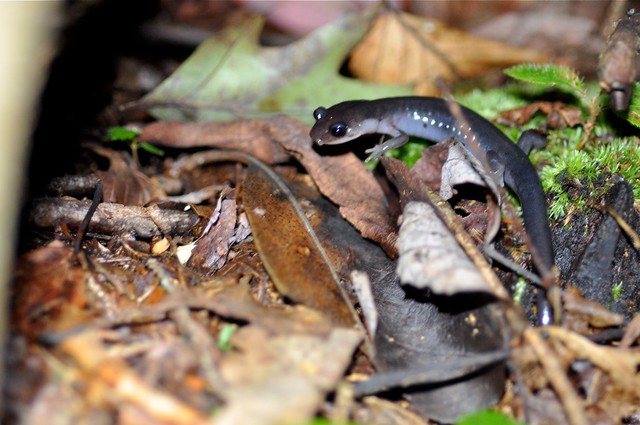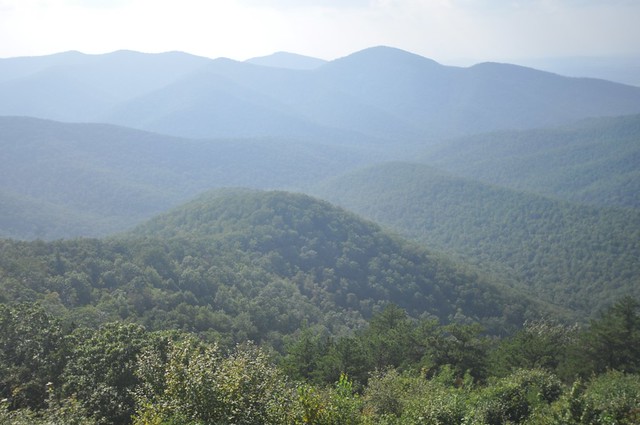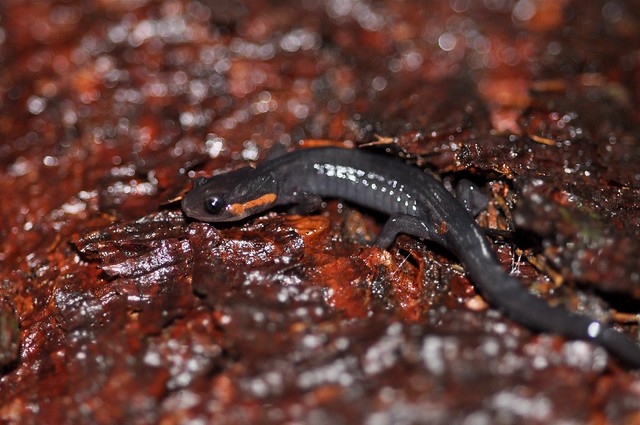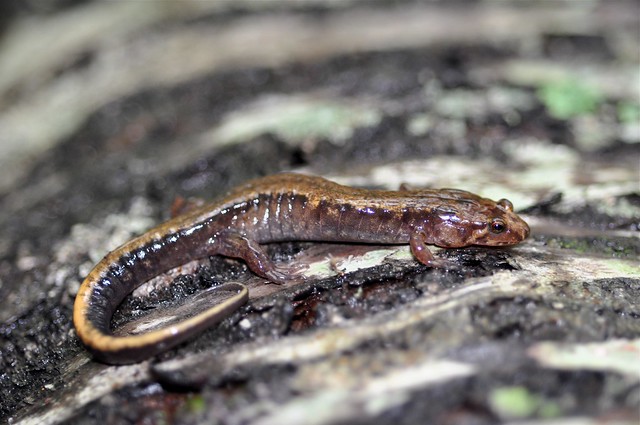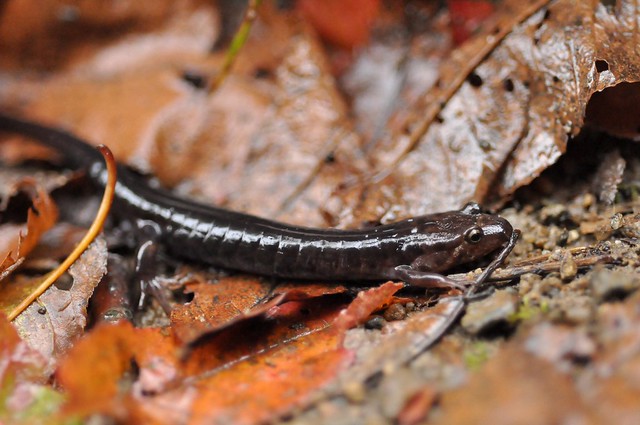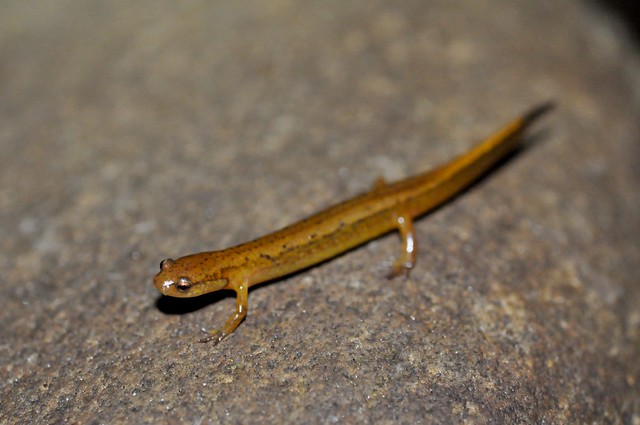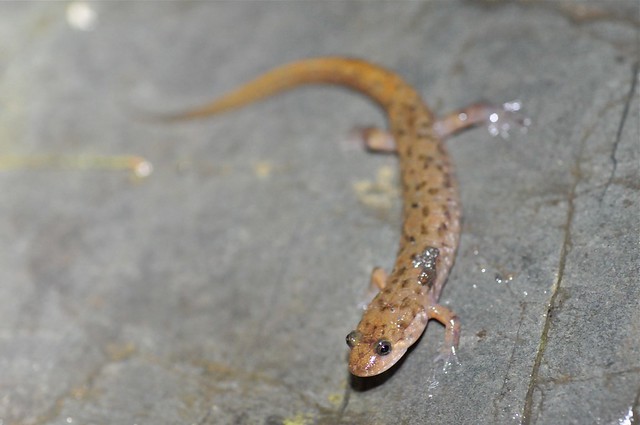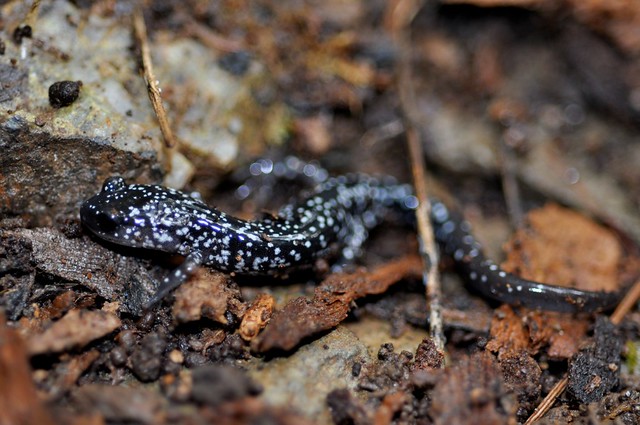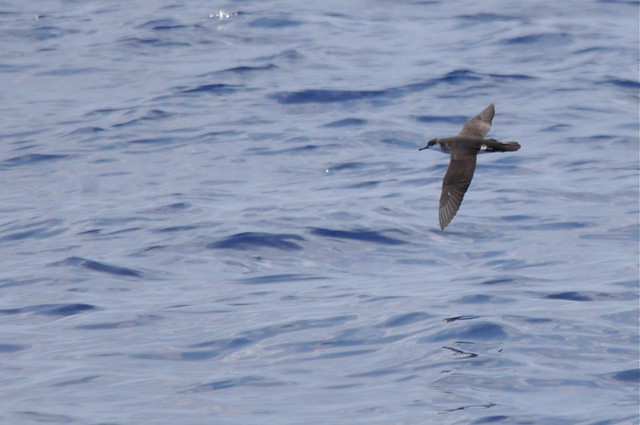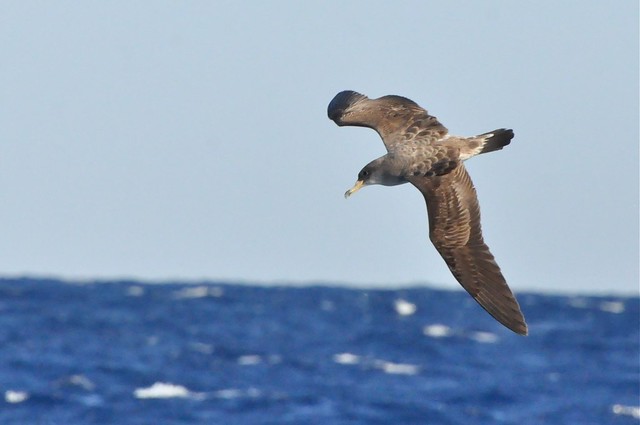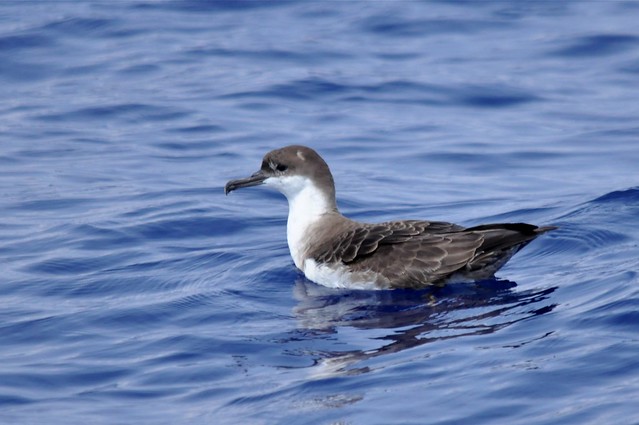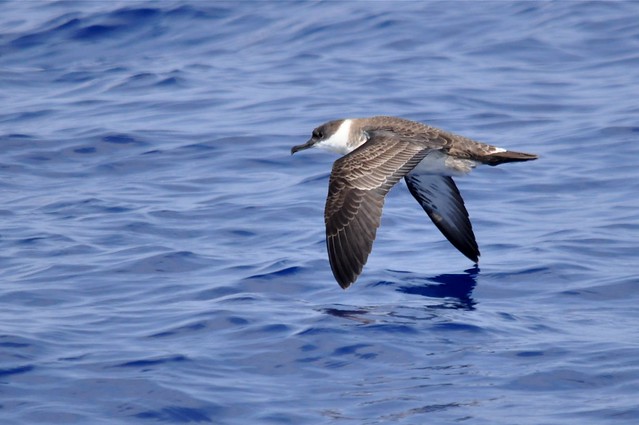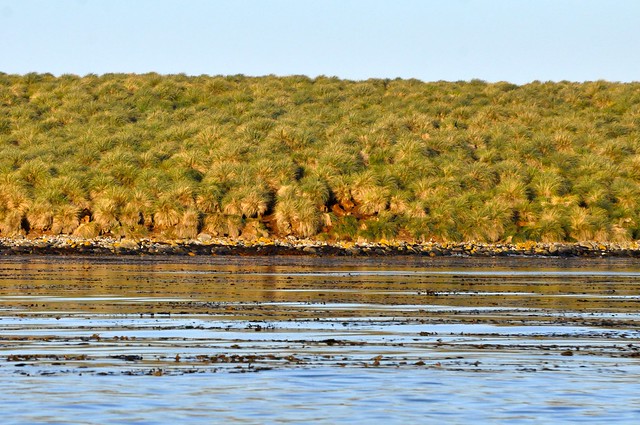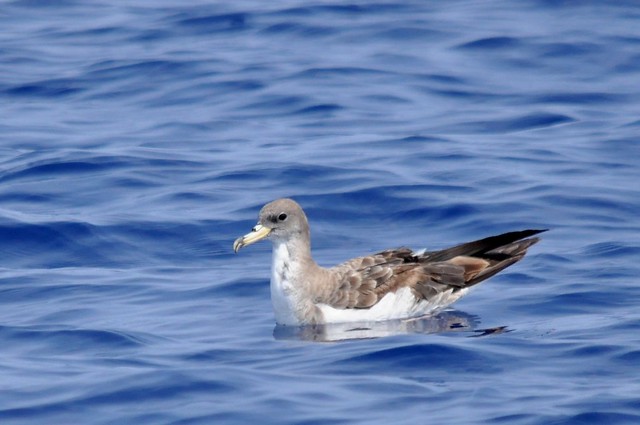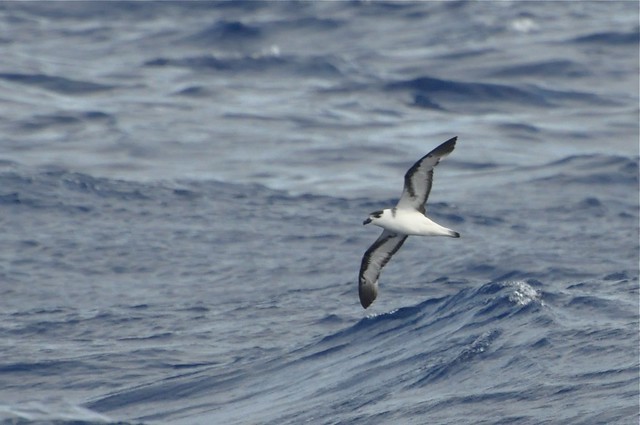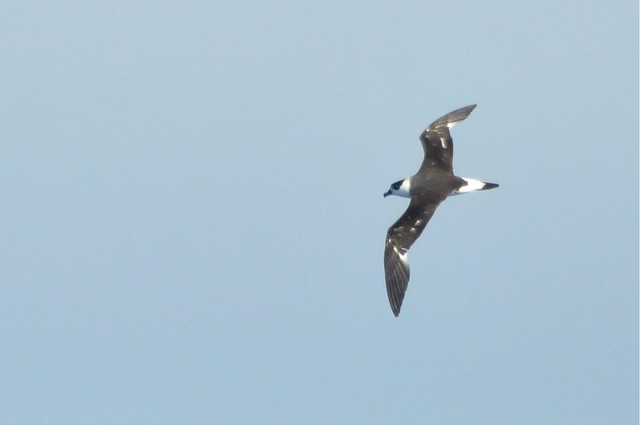After the whole Green Swamp adventure, the next day we went out on a pelagic with Kate and Brian to the Gulf Stream to look for oceanic birds. I was helping spot this time around, which was an awesome opportunity, so I wasn't able to photograph as many birds, but I did get some good ones.
It was a beautiful day - it was hot, sunny and the Atlantic was really calm (not too good for flying birds, though, because tubenoses can't fly properly without wind and just usually sit on the water) There was good company and it was just a lovely day to be out at sea. I don't get out to sea as much as I should being inland in Ontario, so it was a welcome change.
I saw some inshore Bottlenosed Dolphins for a brief few seconds, but they disappeared before anyone else could see them. Once we got a bit further offshore (it takes just under three hours to get to the Gulf Stream usually) we began seeing our first birds.
Just as we suspected, birds were sitting on the water with the lack of wind, and we flushed a small group of
Audubon's Shearwaters.
There were many folks who'd never been out to sea before so the good looks were appreciated by all.
Audubon's are cute, round-winged, stout little tropical shearwaters coming from the Caribbean to feed here. You usually see a few groups of them around on these summer/spring trips - they like feeding in floating Sargassum mats, which were few and far between on this day and so these were to be the best looks. You usually don't see them in baitballs or feeding "swarms" of the bigger shearwaters.
Our boat also flushed a
Red-necked Phalarope but once again, nobody else saw it before it disappeared.
Eventually, once we hit the stream edge we began seeing the big, bulky
Atlantic Cory's Shearwaters.
Atlantic Cory's are big, light grayish shearwaters with long bills that are common in the Stream at this time of year. These birds are coming from the Azores, the Berlengas and the Canaries.
Kate put out some liver oil at this point to try and get some of the tubenoses closer to the boat, but with the no wind it had made the scent sort of pool around the boat and not go anywhere. A Black-capped Petrel can smell the gasses that baitfish release when they rise to the surface from kilometres away but when there's no wind, even the wicked scent of shark liver won't get them.
We did have some Wilson's Storm-Petrels following us and a couple of distant Black-capped Petrels go by.
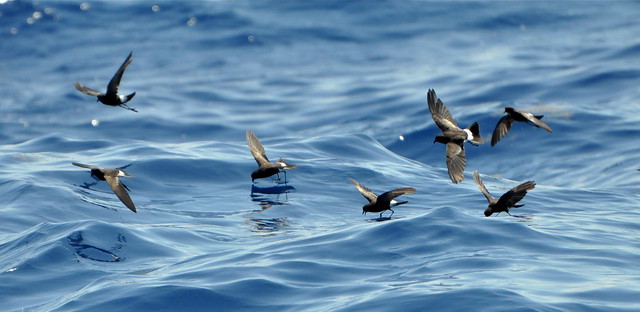
Wilson's Storm-Petrels are coming into the Gulf Stream from subantarctic islands.
Suddenly, I heard Brian announce over our walkie-talkies -
"It's a beehive"
And looking off the bow there was a distant cloud of shearwaters and Skipjack Tuna leaping out of the water - a sign of a baitfish swarm! Brian hauled the Stormy Petrel II towards the flock but by the time we go there, it had calmed down a bit but there were still some fish and birds. Again, because of the lack of wind, many birds were sitting on the water. The flock was primarily Cory's. Cory's Shearwaters near their breeding habitat (i.e the Azores) exhibit feeding behavior that includes amazing, gannet-like dives in which the birds swim a few metres down to get baitfish, and these were featured in the television series Blue Planet, but the Cory's in the Gulf Stream off Hatteras are all young birds that do not exhibit this behavior. There were also some Great Shearwaters mixed in the flock.
Great Shearwater
Great Shearwaters come into the Gulf Stream from Nightingale, Inaccessible and Gough Islands with the largest breeding colony on Tristan da Cunha. About 50 pairs also breed in the Falkland Islands amongst colonies of Sooty Shearwaters, most of them on Kidney Island, which I was fortunate enough to visit this March. They fly with snappier wingbeats and seem to carry themselves more easily than the big, lumbering Cory's.
Kidney Island - home to thousands of Sooty Shearwaters and about 50 pairs of Great Shearwaters, nesting in burrows in the tussock grass.
At one point, a shearwater flew towards the bow of the boat and Kate excitedly announced that it might be a nominate Cory's - a shearwater that is smaller, lighter and slighter-billed than the Atlantic Cory's and breeds in the Mediterranean, and is called Scopoli's Shearwater. The field mark here that distinguishes them from Atlantic birds is the amount of white on the primaries - it is quite restricted in borealis (Atlantic) but goes on to and is extensive on p10 on diomedea (Scopoli's). The biggest colony of these by far is on Madeira, and this bird was probably coming from there.
Sure enough, the bird turned up near the bow where I was and sat on the water. Since the key fieldmark was only seen when the bird was in flight, I waited until it took off.
A Scopoli's Shearwater if I ever saw one!
It was at this point when then wind picked up and finally sent our pungent fish oil smell out into the blue, which finally attracted several Black-capped Petrels close to the boat.
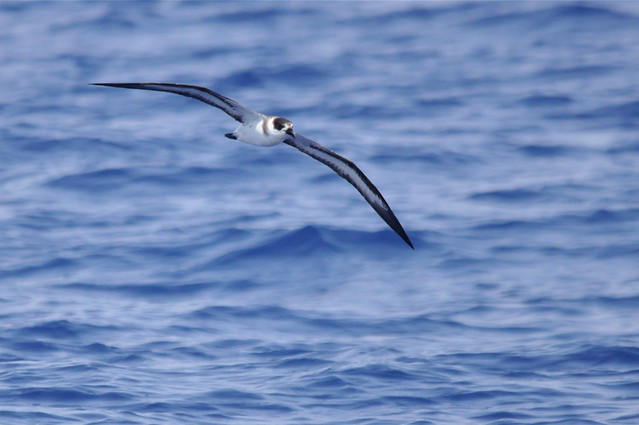
Black-caps are coming into the Gulf Stream from Hispaniola. Unfortunately, they aren't doing too hot over there, where first humans and now feral cats and rats deplete their already low numbers on the forested cliffs there. They used to breed in many of the West Indian islands but now Hispaniola is their only remnant habitat, and their numbers are declining. One may have seen thousands of them on a pelagic 120 years ago, but now we rarely see one hundred birds. It is very sad, but reassuring that they're still hanging in there, as we saw a couple of fresh hatch-year birds.
The picture above is the only good one I got on this trip, but to give you the gist of this beautiful ocean wanderer, here are a few from previous trips -
They come in two colour morphs - pale white-faced birds and darker black-faced birds. We don't know where the white-faced birds originate as all breeding birds on Hispaniola are dark-faced!!! The white-faced birds might represent a different species.
We had LOTS of Black-caps this trip, and that was because of the new moon.
Pterodroma don't feed too much during the day and are reluctant to approach vessels of any kind - preferring to feed on squid and fish that migrate up from the depths in the middle of the night with the nightly plankton migration. They aren't owls, however, and can't see very well unless the moon helps them out. It hasn't been for the past several days, and these birds were
starving. They buzzed metres away from the boat, ate our chum and we even saw one in 100 feet of water on the way back to shore. They were desperate for food at this point, but not to worry - the moon would shortly have made a presence and the birds would have been able to feed properly.
It ended up being a great day offshore, and many folks who'd never been out before got many new birds. As we were turning in and making our trip back, Kate was getting rid of the last of our chum and a second-year
Pomarine Jaeger decided to become our 'pet' for a while. We usually see Poms now and again chasing shearwaters at a swarm but this bird learned that following the boat is more productive.


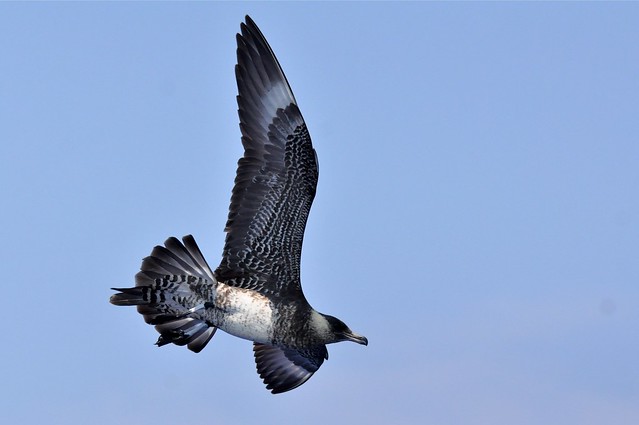
Jaegers do not use dynamic soaring to get around and have a lower wing-loading than the petrels and shearwaters. Their wings are very broad rather than very narrow like in the tubenoses. This means that they're not truly built for a mostly pelagic lifestyle - they spend a lot of energy flapping. This does mean, however, that during calm days when the tubenoses are almost useless that the jags can still fly, and we saw several poor Black-capped Petrels get robbed of their food!!
Everyone had a great day and we even had both Bottlenose and Spotted Dolphins ride the bow, and of course lots of flyingfish. I hope to return to Hatteras for more seabirding next spring and summer - I'll need it!
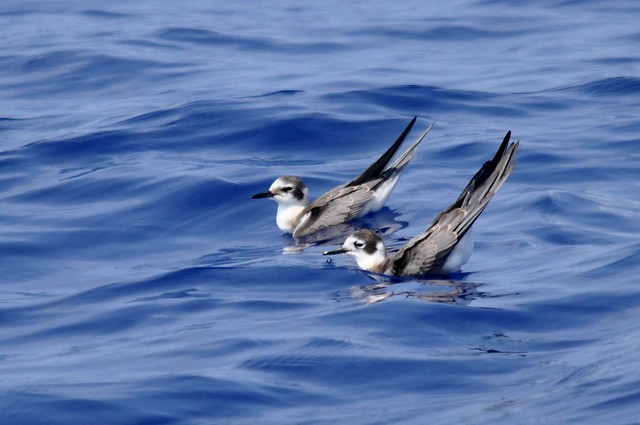
We saw many Black Terns offshore, and these two were exhausted from migration and landed on the water - unwise for terns, as their feathers get waterlogged quite quickly. This is why they try hard not to get their wings wet.
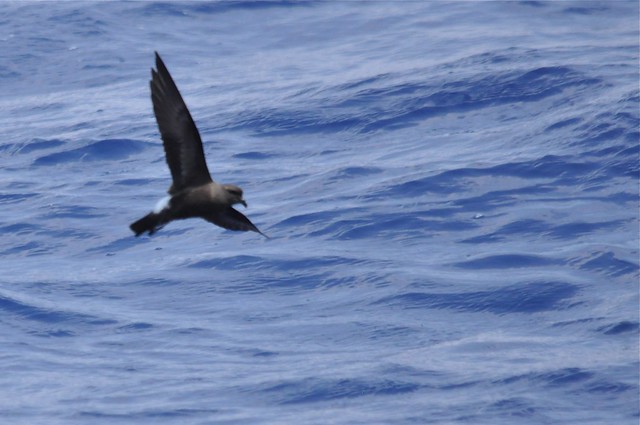
We saw a couple of Band-rumped Storm-Petrels as well, including this one which sat on the water for a while. They're bigger and longer-winged than the Wilson's, and fly very differently (like a shearwater). These are Mediterranean birds and are likely coming from Madeira.
